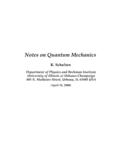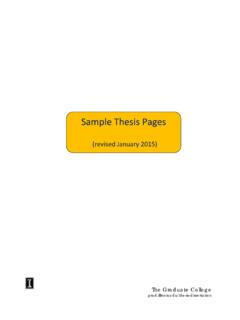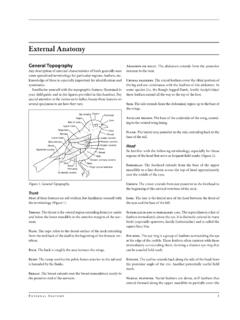Transcription of Urbana at Felisa - Philippine Studies
1 Philippine Studies Ateneo de Manila University Loyola Heights, Quezon City 1108 Philippines Urbana at Felisa Soledad S. Reyes Philippine Studies vol. 47, no. 1 (1999): 3 29. Copyright Ateneo de Manila University Philippine Studies is published by the Ateneo de Manila University. Contents may not be copied or sent via email or other means to multiple sites and posted to a listserv without the copyright holder's written permission. Users may download and print articles for individual, noncom- mercial use only. However, unless prior permission has been obtained, you may not download an entire issue of a journal, or download multiple copies of articles.
2 Please contact the publisher for any further use of this work at Urbana at Felisa Soledad S. Reyes Since its initial publication Modesto de Castro's prose work Ang Pagsusulatan ng Magkapatid na si Urbana at Felisa (1864)hasbeen highly regarded as a privileged text for a number of reasons. Firstly, de Castro's work was one of the longer prose narratives written in Tagalog. Thus, it joined Miguel Lucio Bustamante's Si Tandang Bacio Macunat, another original work in the native tongue, in the select group of discourses which proved that Tagalog could be used to explore facets of experiences other than those delineated in the awit and corrido or the pasyon.
3 Against a context where pnvi- lege was bestowed on texts written in Spanish, the language of power, Urbana at Felisa was no mean achievement even as it created a space for a lengthy treatise which constituted a wide range of ex- perience in the language of the colonized. Secondly, Urbana at Felisa has been credited as a precursor of the novel, a significant source of influences especially on the Tagalog novel which would emerge and flower in the first decades of Ameri- can rule. This proto novel is notable, from a literary point of view, for its awareness of its own fictionality, of its being an artifact carved out of the raw but culture-bound experiences of a middle class fam- ily in the first half of the nineteenth century (see for example, Almario 1974, 1-38; Mojares 1976, 46-54; and Reyes 1982, 6-7).
4 Thirdly, the book has been traditionally regarded as a repository of lessons meant not only for nineteenth-century readers, but also intended for twentieth-century readers. Critics have emphasized the number of times the text has been reprinted-1877, 1889, 1907, 1925, and 1938--and the different translations in Ilocano (by Jacinto Caoili), Bicolano (by Fruto del Prado), and in Visayan (Alzona 1939, 4). Its popularity could be traced to its appeal not only in the Tagalog- speaking areas but in other places as well. Philippine Studies . Lastly, in a society where the cast of characters was dominated by men, Urbana at Felisa featured two female characters as the hero- ines of the discourse.
5 In hindsight, the central position assigned to these women, even if limited to the world of fiction, must have pro- voked some questions in the minds of those used to following the adventures of saints and sinners, of adventurers and fortune hunt- ers. In Urbana at Felisa the voices allowed to speak came from two young women--articulate, authoritative, and gifted with intelligence. In retrospect, Urbana at Felisa was popular for at least one hun- dred yearsstarting in the second half of the nineteenth century and peaking in the first few decades of American r u l e f o r at least five generations of readers.
6 At present, the work is alive in various text- books in Philippine literature as a significant nineteenth-century text that promoted good manners and right conduct among its readers. But as a cultural artifact, except in some critical essays, the book is treated fondly as a quaint anachronism from a bygone era, and is to be studied as part of a long forgotten past with its system of values and beliefs. However, as late as 1938, when the last edition of the book was published, a number of critics still looked at the text as a document worthy of being read for the words of advice that could be extracted from it.
7 As these critics averred, the book was relevant not only to the reader of the nineteenth century. Because of its power, it was significant to the twentieth century reader desirous of leading a morally purposeful life. Urbana at Felisa was a guidebook that presented models of exem- plary conduct and behavior worthy of emulation by everybody. Encarnacion Alzona (1939, 4), a foremost historian and social critic, typified the scholar who looked favorably at the text: Ang aklat na ito ay ukol sa pagsusulatan ng dalawang binibini na nagngangalang Urbana at Felisa ; at sa pamamagitan ng mga sulat na nasabi ay ipinabatid ni Padre de Castro ang maiinam na asal ng tao na dapat sundin ng lahat, bata at matanda, babae at lalake, sa kanilang pakikipagkapwa-tao.
8 Ipinalalagay ng marami na ang mga ugaling nasasaysay dito ay maringal na kailangang maging huwaran ng tunay na mga Pilipino at di dapat na ikahiya kahit na sa mga araw na ito. Ang mga Pilipino ay hindi na nangangailangan ng isang Emily Post upang magturo sa kanila ng ukol sa pakikipagkapwa-tao, sapagkat mayroon na tayong isang Padre de Castro na nag-iwan sa atin ng mga gintong aral na dapat ugaliin ng mga Pilipino hindi lamang sa mga nakaraang araw kundi sa ngayon man at sa hinaharap. Urbana AT Felisa . (This book is about the exchange of letters between two ladies named Urbana and Felisa ; and through these letters Fr.)
9 Modesto de Castro made known the desirable behavior that everyone-young and old, women and men-should observe in dealing with other people well. It is thought by many that the ideal conduct described in this book should be emulated by Filipinos and should not be cause for embarrasment even in these days. Filipinos do not need an Emily Post to teach them good manners because we already have Father de Castro who left behind golden rules which Filipinos ought to follow not only then but even now and in the time to come.). For Alzona, de Castro's discourse contained all that was praisewor- thy about the Filipinos' character and personality-respect for elders, their penchant for cleanliness, their fidelity to their vows, their cir- cumspection and innate modesty.
10 She argued that the behavior of the present generation of Filipinos-vulgar, loud, hypocritical-had been a reprehensible influence of American culture and did not there- fore have roots in the indigenous way of life. Writing when the process of Americanization had made inroads into the Flipino's psyche and behavior, Alzona saw Urbana at Felisa as a text to heighten the radical differences between the past, pow- erfully constructed in the book, and the present, shaped by Ameri- can materialism. After close to four decades of American influence, the world of Urbana and Felisa was almost unrecognizable (see, for example Lardizabal 1959, 105-6; Robb 1963, 3246).









